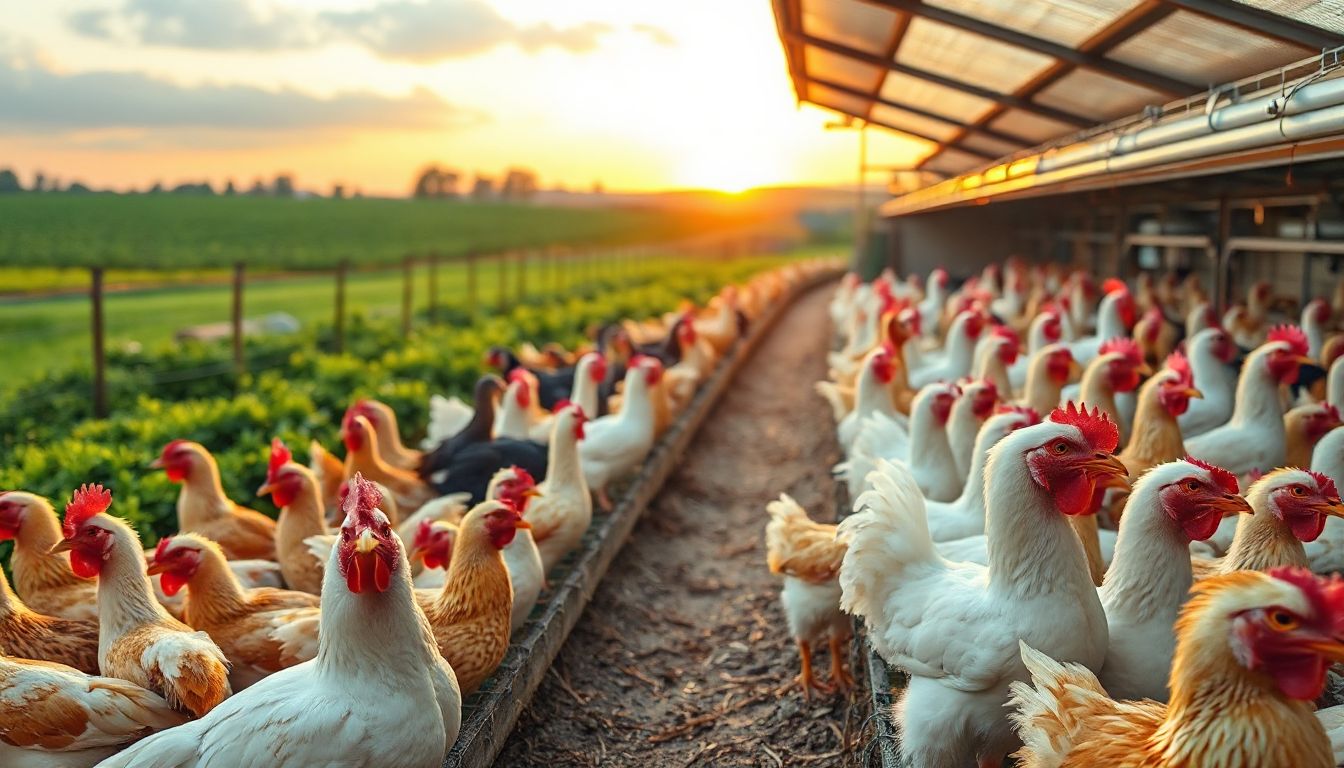
Comprehensive Guide to Maximizing Returns in Poultry Farming
Introduction
The poultry industry plays a huge role worldwide. It provides food, jobs, and income for millions. Whether you’re just starting or want to boost your farm’s earnings, knowing what type of poultry is most profitable is key. The right choice depends on factors like market demand, feed costs, and growth speed. Picking the best poultry can mean the difference between a steady income and losses. This guide covers what to look for and which poultry types often bring in the most profit.
Factors Influencing Poultry Profitability
Market Demand and Consumer Preferences
What people want to buy shapes what’s profitable. If your market craves eggs, laying hens might be your best bet. If meat is in high demand, broilers could score big. Trends like organic or free-range products also influence profits. Staying in tune with what customers seek helps you produce what sells fastest and at the best prices. For example, specialty eggs like omega-3 or brown eggs often fetch higher prices.
Feed Conversion Ratio and Growth Rate
Feed costs are a major part of poultry farming. The feed conversion ratio (FCR) measures how much feed a bird needs for growth or egg production. The lower the FCR, the cheaper your costs. Broilers grow fast and convert food efficiently, making them a top choice for quick profits. On the flip side, slow-growing breeds might cost more but can meet niche markets.
Initial Investment and Operating Costs
Starting costs vary by poultry type. Broiler farms need less investment upfront, but equipment for layer operations might be more expensive. Ongoing costs include feed, healthcare, and housing. The goal is to balance initial spending with long-term gains. Always consider how much you can afford and how quickly you want to see returns.
Disease Resistance and Management
Healthy birds mean better profits. Diseases can wipe out flocks and drain resources. Some poultry breeds are more resistant to common illnesses. Implementing good hygiene, vaccines, and regular health checks keeps losses low. Preventing issues is cheaper than treating sick birds and losing production.
Top Most Profitable Poultry Types
Broilers (Meat Chickens)
Broilers are the meat champions of poultry farming. They grow from hatch to market weight in just 6-8 weeks. Their rapid growth and high feed efficiency make them very profitable. Market prices are currently strong, especially with rising demand for chicken meat worldwide. Major companies like Tyson Foods or JBS focus heavily on broilers because of their fast turnover and consistent demand.
Layer Chickens (Egg Production)
Egg-laying hens can provide a steady income for years. They lay eggs daily, creating an ongoing revenue stream. The key is to maximize egg production and quality. Organic or specialty eggs, like brown or free-range, often sell for higher prices. Small farmers sometimes focus on niche markets to get better returns. Proper nutrition and lighting help optimize egg yields.
Heritage Breeds and Specialty Poultry
Heritage breeds like Ayam Cemani or Sebastopol geese might cost more initially but can bring in premium prices. These breeds appeal to customers who want unique, high-quality products. Marketing these specialty items involves telling their story or emphasizing natural breeding. They work well in small-scale farms or boutique markets with higher profit margins.
Dual-Purpose Breeds
Dual-purpose birds are great for farmers wanting both eggs and meat. They can produce decent-sized chickens and eggs, offering more ways to earn. Operating costs are usually lower than dedicated meat or egg farms. Many small farmers use these breeds because they diversify income, lowering overall risk.
Emerging Trends and Innovations Increasing Poultry Profitability
Technological Advancements in Poultry Farming
Automation, smart sensors, and AI are changing how we farm chickens today. Automation reduces labor costs and increases efficiency. AI helps monitor health, feed intake, and growth. These tools can quickly spot problems, saving money and improving yields. The future looks bright, with smarter farms producing more with less effort.
Sustainable and Organic Poultry Farming
More consumers want organic, humane, and eco-friendly poultry products. They’re willing to pay a premium for transparency. Certification processes highlight quality, making products stand out. Eco-friendly practices, like composting waste or using solar power, can cut costs and boost profits in the long run.
Value-Added Products and Niche Markets
Turning poultry into ready-to-eat meals or branding eggs as health-focused items can unlock higher prices. E-commerce allows selling directly to customers, bypassing middlemen. This strategy increases profit margins and creates loyal customers. Offering specialty products, like organic or gourmet eggs, also taps into lucrative niche markets.
Practical Tips for Maximizing Poultry Farming Profits
- Do your research before choosing what poultry to breed. Know your market.
- Invest in good nutrition and health care. Happy, healthy birds produce more.
- Use efficient housing and equipment. Proper ventilation and lighting matter.
- Consider diversifying your products—eggs, meat, or both.
- Keep up with industry news and new technology.
- Promote your farm online or through local markets to attract customers.
Conclusion
Profitability in poultry farming depends on many choices. Market demand, costs, and the health of your flock all matter. Broilers and laying hens are popular because they grow fast and produce steady income. Niche markets like heritage breeds or organic eggs can bring bigger margins with the right marketing. To succeed, pick your poultry type based on your local demand and resources. Stay updated and keep a close eye on costs—these are your best tools for a profitable farm. Implement smart strategies, and your poultry farm can turn into a consistent money-maker.